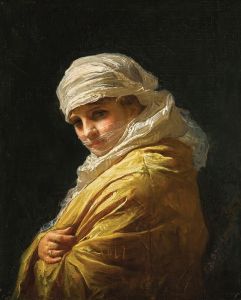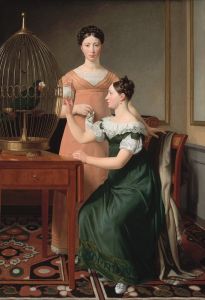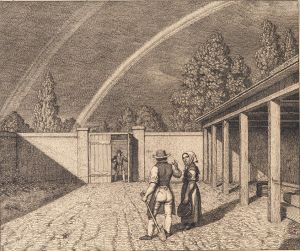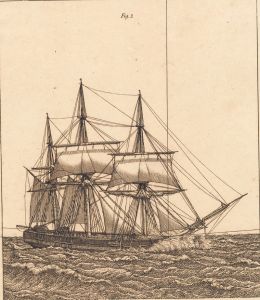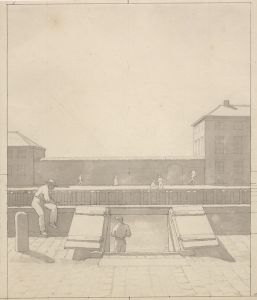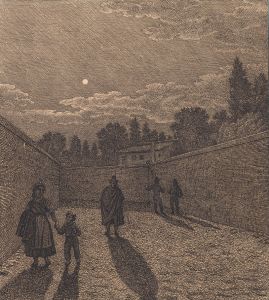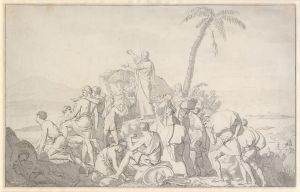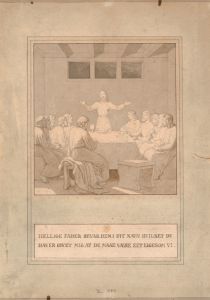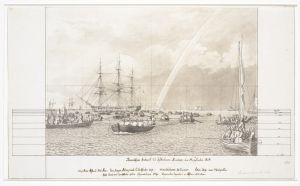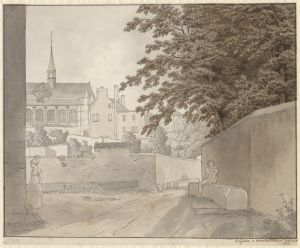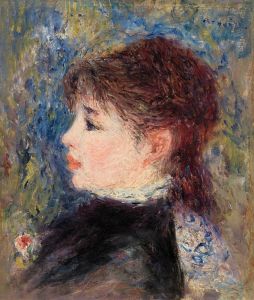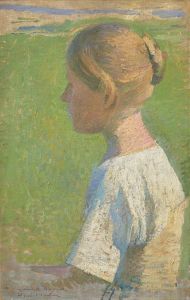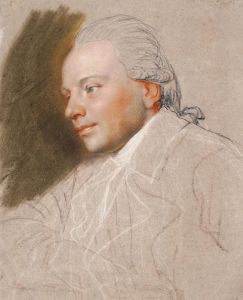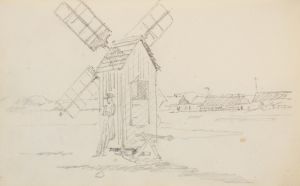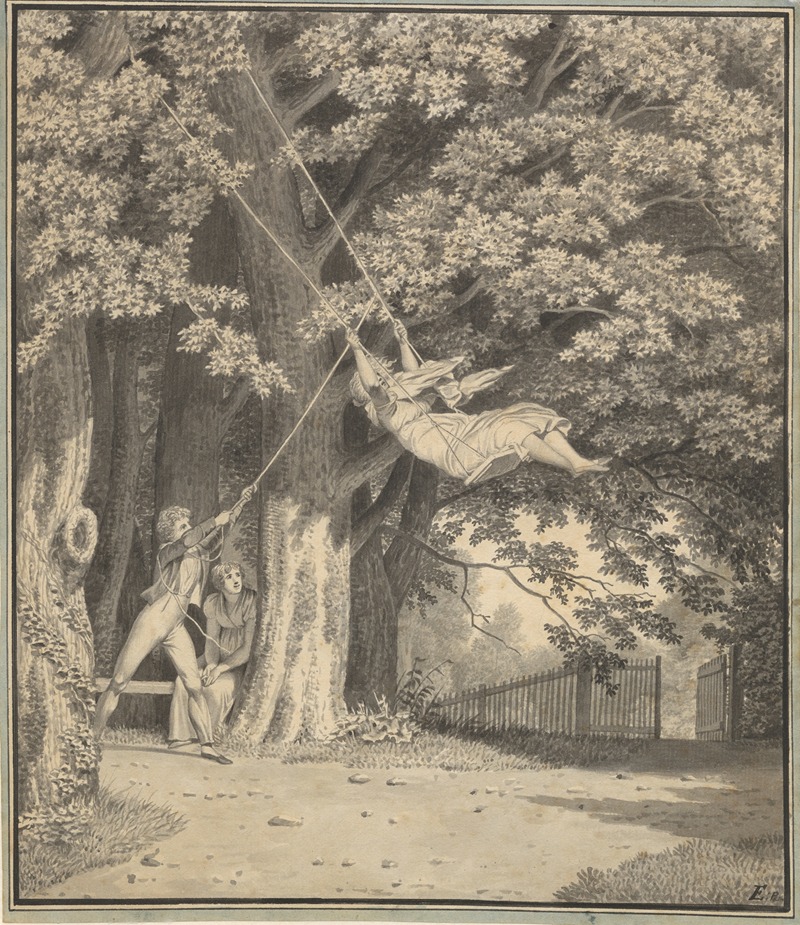
Skovparti ved Skjoldnæsholm med en ung mand, der gynger en ung pige
A hand-painted replica of Christoffer Wilhelm Eckersberg’s masterpiece Skovparti ved Skjoldnæsholm med en ung mand, der gynger en ung pige, meticulously crafted by professional artists to capture the true essence of the original. Each piece is created with museum-quality canvas and rare mineral pigments, carefully painted by experienced artists with delicate brushstrokes and rich, layered colors to perfectly recreate the texture of the original artwork. Unlike machine-printed reproductions, this hand-painted version brings the painting to life, infused with the artist’s emotions and skill in every stroke. Whether for personal collection or home decoration, it instantly elevates the artistic atmosphere of any space.
Christoffer Wilhelm Eckersberg, often referred to as the father of Danish painting, created the artwork "Skovparti ved Skjoldnæsholm med en ung mand, der gynger en ung pige" in 1826. This painting is a notable example of Eckersberg's contribution to the Danish Golden Age of painting, a period characterized by a flourishing of the arts in Denmark during the first half of the 19th century.
Eckersberg was born in 1783 in Blåkrog, Denmark, and he studied at the Royal Danish Academy of Fine Arts in Copenhagen. He further honed his skills in Paris under the tutelage of Jacques-Louis David, a leading French neoclassical painter. Eckersberg's exposure to neoclassicism and his travels in Europe, particularly in Italy, significantly influenced his artistic style, which is evident in his precise attention to detail and composition.
The painting "Skovparti ved Skjoldnæsholm med en ung mand, der gynger en ung pige" translates to "Forest Scene at Skjoldnæsholm with a Young Man Swinging a Young Girl." It depicts a serene and idyllic scene set in the lush forested area of Skjoldnæsholm, an estate located in Denmark. The composition captures a young man pushing a young girl on a swing, surrounded by the tranquil beauty of nature. This work reflects Eckersberg's skill in rendering landscapes with a sense of realism and harmony, a hallmark of his style.
Eckersberg's ability to capture light and atmosphere is evident in this painting. The dappled sunlight filtering through the trees creates a dynamic interplay of light and shadow, enhancing the sense of depth and realism. The figures are rendered with meticulous detail, showcasing Eckersberg's mastery in portraying human anatomy and expressions. The young girl on the swing appears joyful and carefree, while the young man exudes a sense of gentle attentiveness, adding a narrative element to the scene.
This painting is a testament to Eckersberg's dedication to plein air painting, a technique that involves painting outdoors to capture the natural light and environment accurately. This approach was relatively innovative at the time and laid the groundwork for future developments in landscape painting, influencing later artists such as the French Impressionists.
Eckersberg's work, including this painting, played a crucial role in shaping the Danish art scene. As a professor at the Royal Danish Academy of Fine Arts, he mentored a generation of Danish artists, including notable figures like Wilhelm Bendz, Christen Købke, and Martinus Rørbye. His teachings emphasized the importance of studying nature directly, which became a defining characteristic of the Danish Golden Age.
"Skovparti ved Skjoldnæsholm med en ung mand, der gynger en ung pige" is housed in the collection of the Statens Museum for Kunst (The National Gallery of Denmark) in Copenhagen. The museum holds a significant collection of Eckersberg's works, allowing visitors to appreciate the breadth and depth of his contribution to Danish art.
In summary, Christoffer Wilhelm Eckersberg's "Skovparti ved Skjoldnæsholm med en ung mand, der gynger en ung pige" is a quintessential example of his landscape painting, reflecting his neoclassical training and his innovative approach to capturing nature. The painting not only exemplifies the artistic achievements of the Danish Golden Age but also underscores Eckersberg's lasting influence on the development of landscape painting in Europe.





